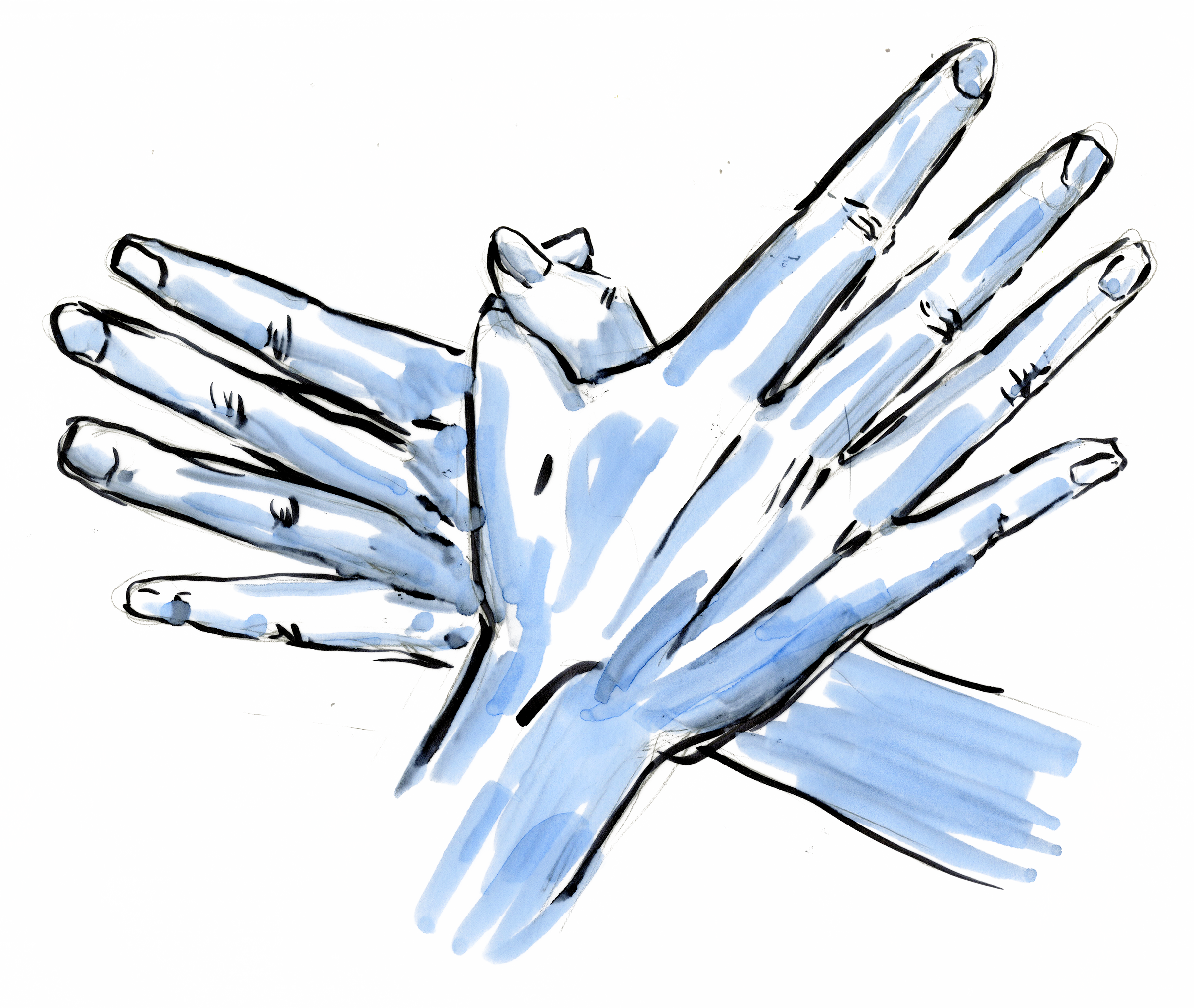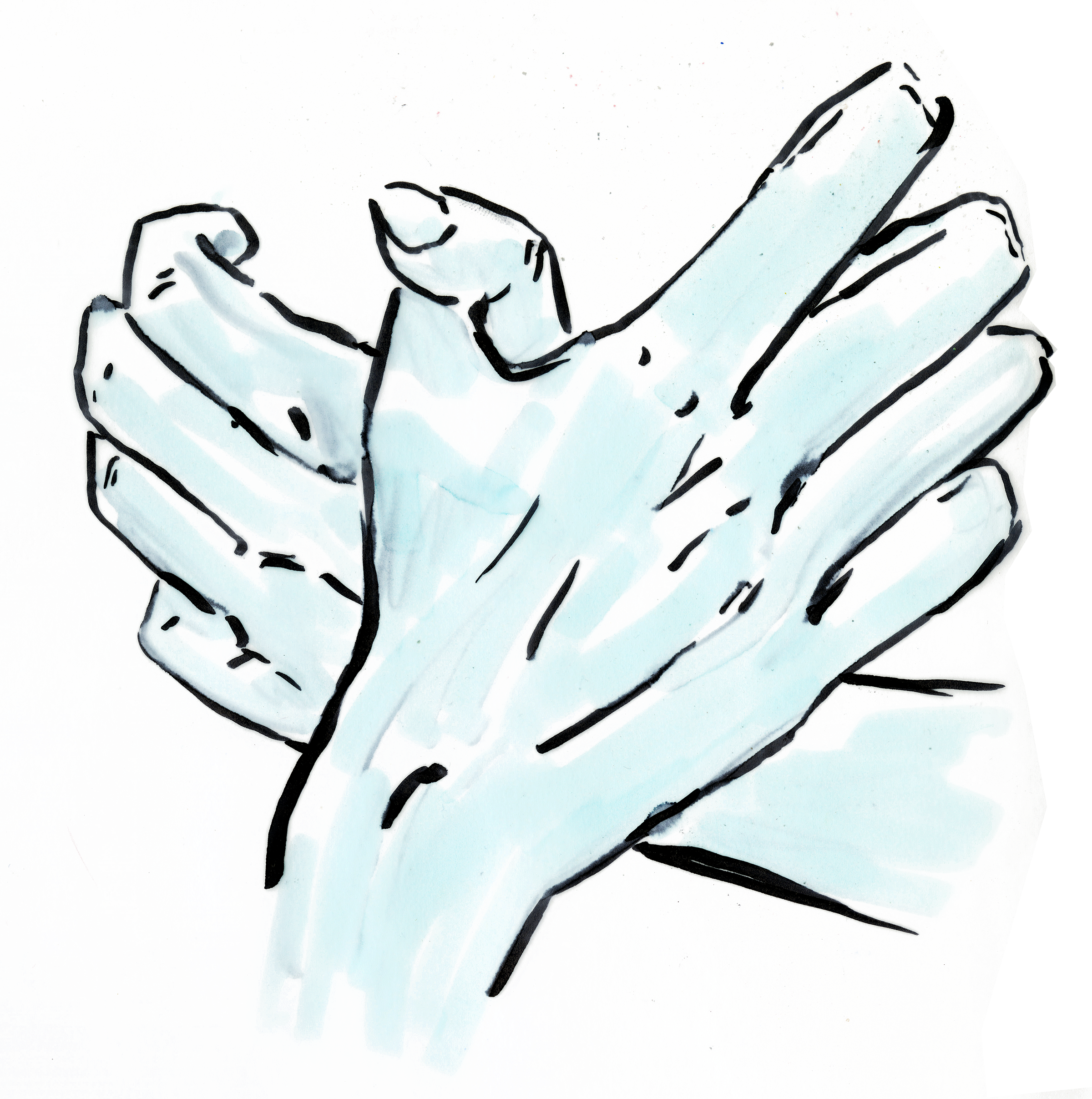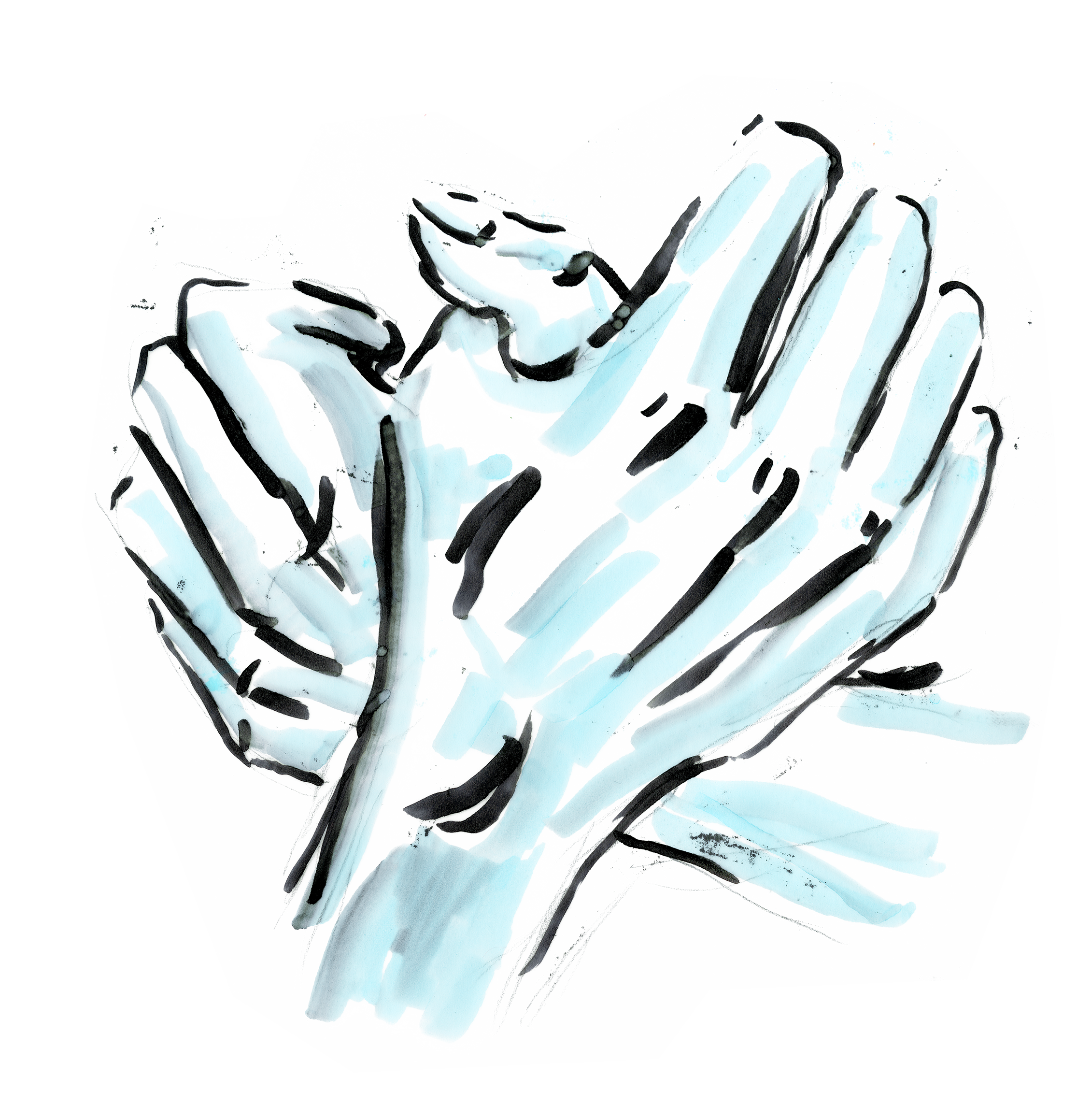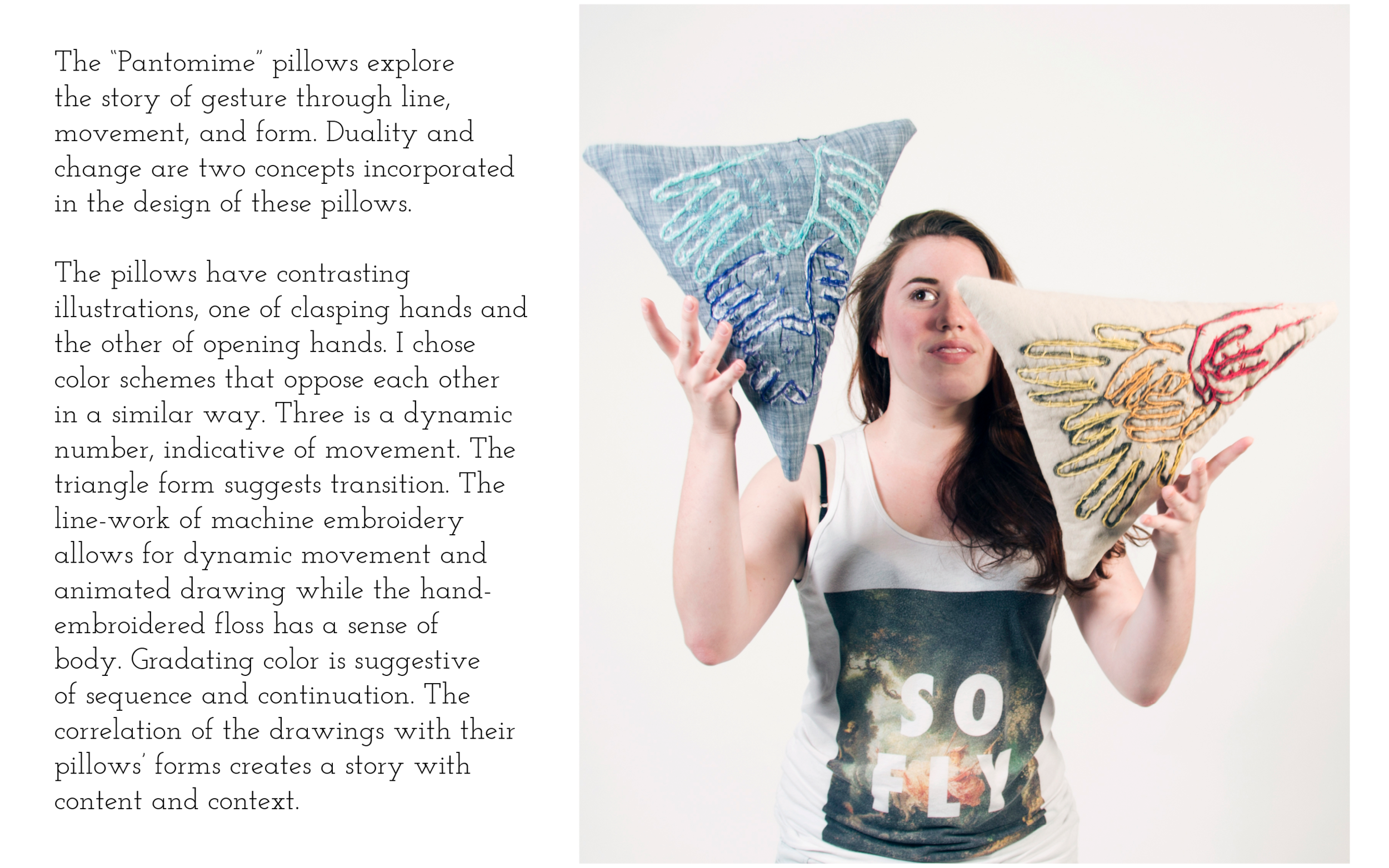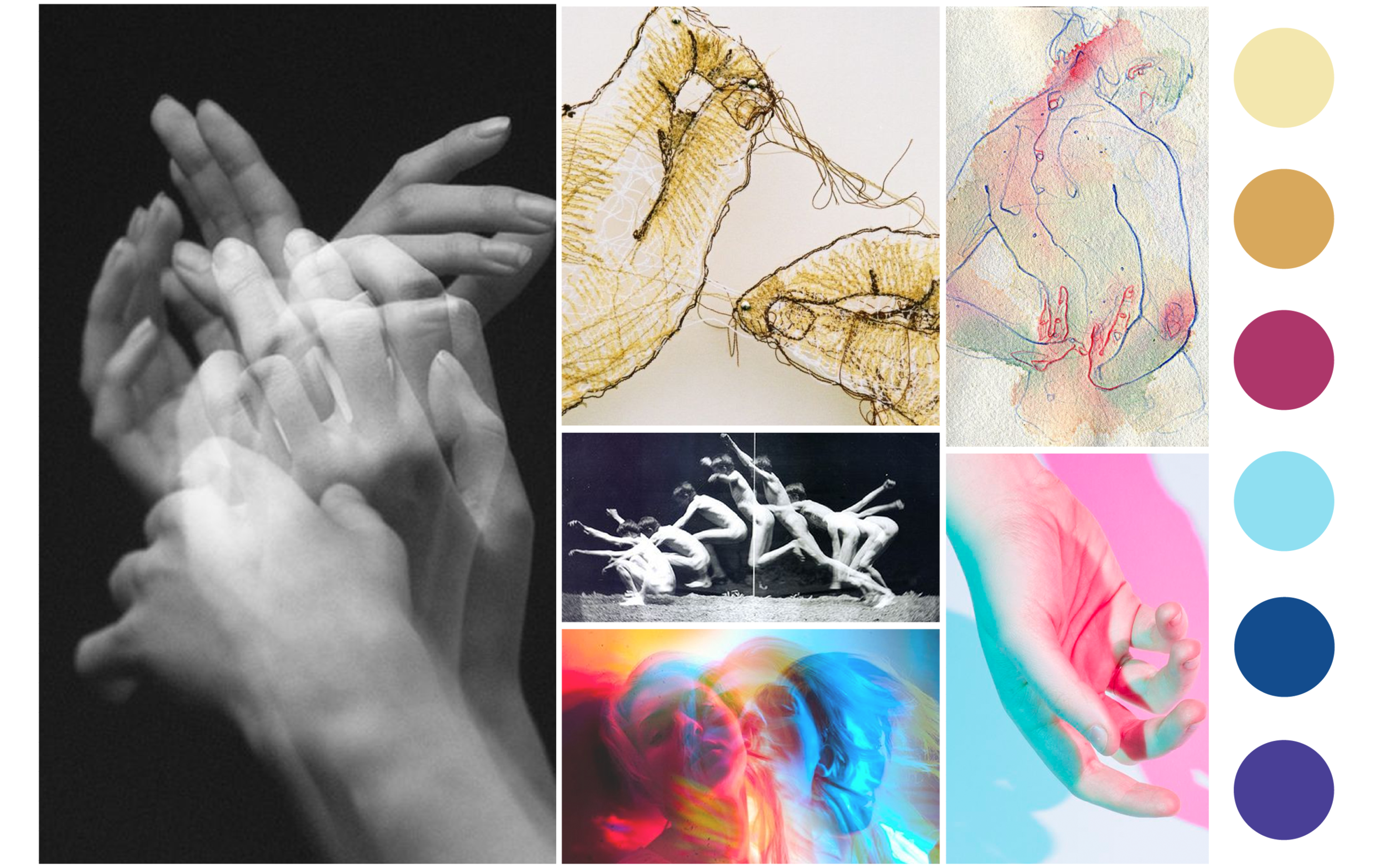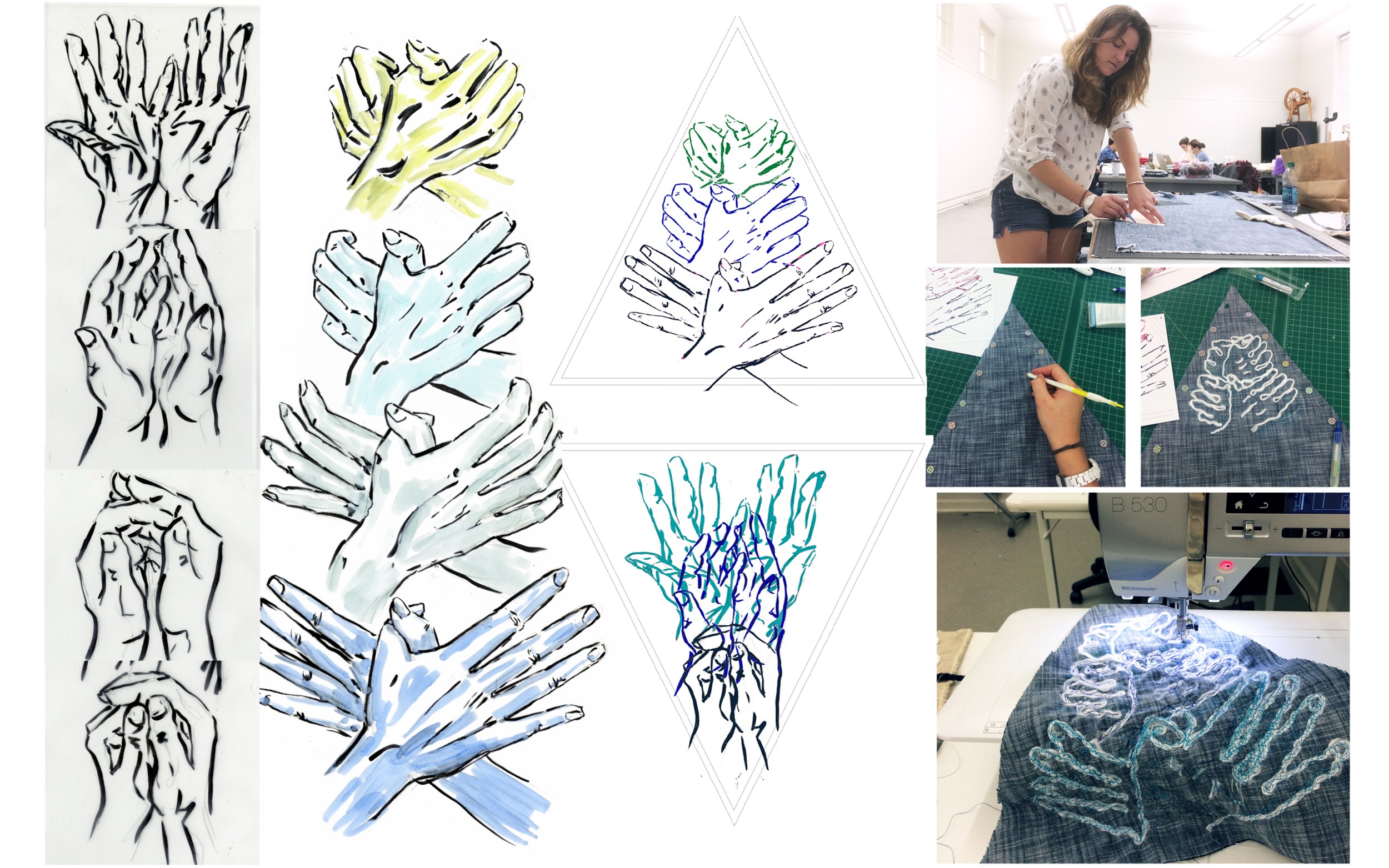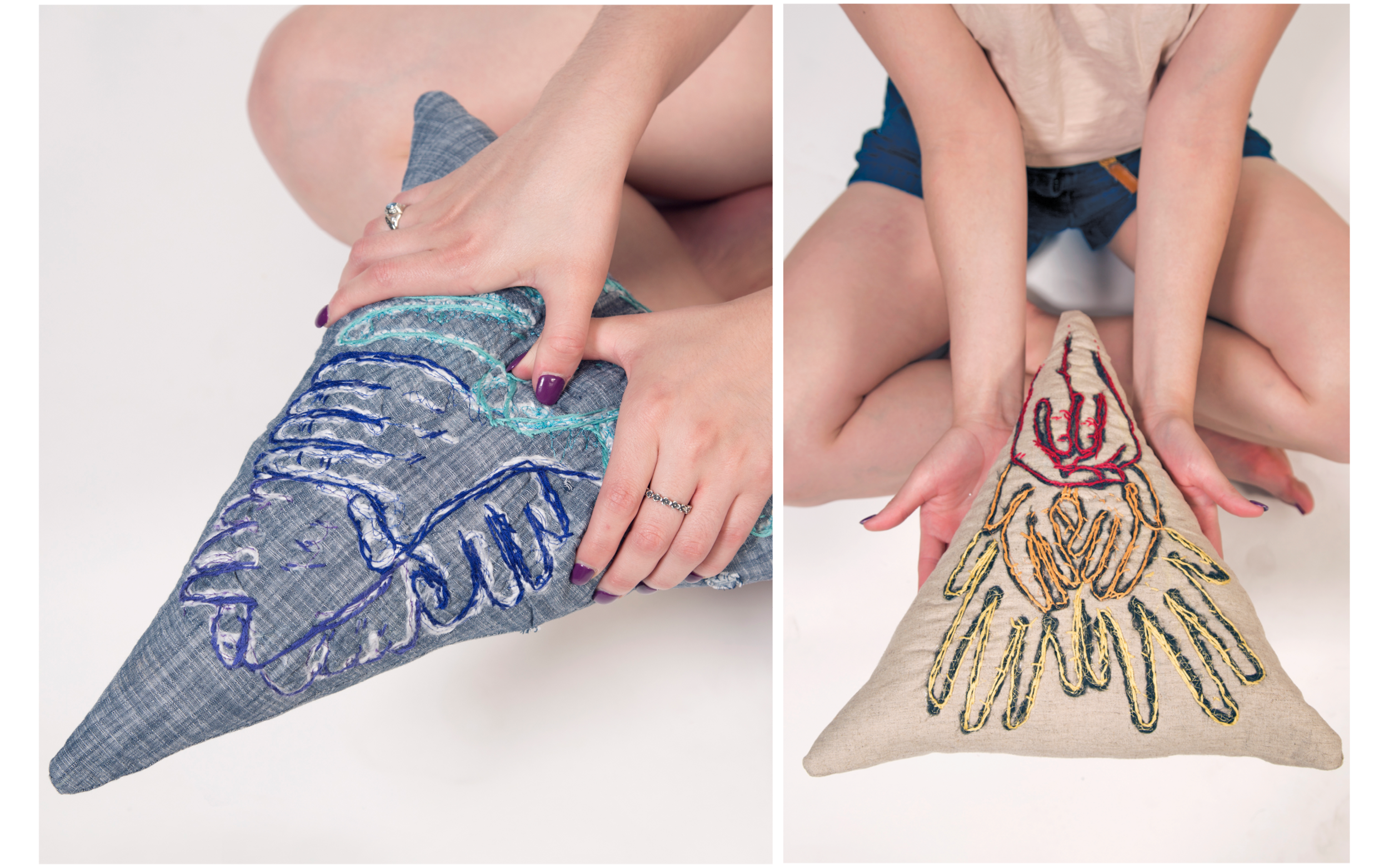The Pantomime pillows branched from exploration of the question of whether hand gestures could exist as purely physical and visual cues, without cultural context.
I began by thinking of gestures that were physically indicative of a story, not culturally, utilizing continuity. By depicting the gesture as an action, as a series of drawings, while also removing them from the specificity or indications of the whole of the human body, I hoped to extract them from cultural context. Specifically, the Pantomime pillows attempt this by creating new separate contexts and by using form and color within them.
As physical objects, the pillows are self contained, allowing them, and their gestures, to have their own identities. The triangle form of each pillow is indicative of change-- they are oblong and therefore not stable, suggesting some kind of forward movement. The three hands on each pillow are successive parts of a single motion, emphasized by the gradating colors. Additionally, the forms and movement of the actions themselves relate to the forms of the pillows; the opening hands spread toward the wide base of the triangle while the closing hands grasp at the point.
Hands have been key tools for communication between humans since before we were human. They develop different meanings in different groups-- some completely independently and some in conjunction with or as a result of interaction between these groups. They can be specific within different religions and spiritualities, locales, nations, ethnic groups, and even within specific families. The incredible thing about hand gestures is that the complexity of their meaning relies on their context and intention. When separated from their contexts, hand gestures are either: stripped to their most fundamental physical indications; their implications are left entirely to the interpretation of the witness, with that person's history becoming the context.
Below I've included my portfolio entry for Pantomime:




